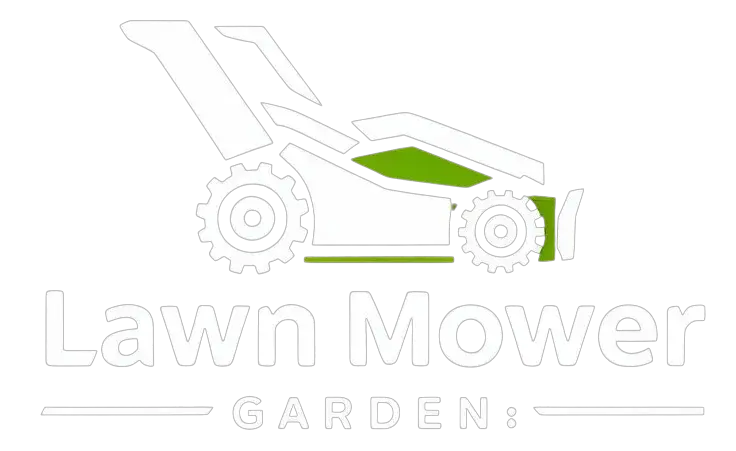
When it comes to keeping your lawn in top shape, the trusty lawn mower is your best friend. Whether you’re tackling a small patch of grass or a sprawling backyard, it’s an essential tool that many people rely on. But with great power comes great responsibility. Mowers are powerful machines with sharp blades, and their operation carries potential risks if not handled properly.
In this guide, we will explore essential safety tips for operating lawn mowers, from proper maintenance to safe handling techniques. We’ll also share personal anecdotes, expert advice, and key insights to ensure your lawn mowing experience is safe and effective.
Why Lawn Mower Safety Matters
Imagine this: You’ve just finished mowing your lawn. It looks neat, tidy, and well-manicured. But as you walk toward the shed to put the mower away, you realize you made a mistake. You forgot to disengage the blades before stepping away, and now, the mower’s sharp blades are still spinning. As a result, you trip and fall.
It may sound like a simple oversight, but lawn mower accidents can lead to serious injuries. According to the U.S. Consumer Product Safety Commission (CPSC), nearly 75,000 people are treated in hospitals annually for lawn mower-related injuries. This highlights the importance of knowing how to safely operate this tool.
Let’s dive into the essential safety tips that will help you avoid accidents and keep your mowing sessions smooth.
1. Read the Owner’s Manual Thoroughly
Every lawn mower comes with an owner’s manual. While it might seem like a chore to read it, this guide contains important safety instructions and specifications that are crucial to the safe operation of your mower.
Why it matters: Different mowers come with unique features, and the manual will help you understand how to operate your mower correctly, including starting procedures, safety mechanisms, and maintenance schedules.
Key points to look for in the manual:
- Starting and stopping the mower: Procedures vary by model.
- Safety features: How to use built-in safety features like blade brakes or shut-off switches.
- Maintenance guidelines: Proper maintenance extends the mower’s life and prevents accidents.
2. Wear Proper Protective Gear
Before you even start the mower, ensure that you’re wearing the appropriate safety gear. You’re dealing with a powerful machine, and protection is key to keeping accidents at bay.
Essential protective gear includes:
- Safety goggles: Protect your eyes from flying debris.
- Sturdy footwear: Avoid open-toed shoes. Wear steel-toed boots or shoes with good grip to protect your feet.
- Ear protection: Mowers can be loud. Use earplugs or earmuffs to protect your hearing.
- Gloves: They offer a better grip and protect your hands from cuts or burns.
3. Inspect Your Mower Before Use
Before firing up your mower, a quick inspection is crucial. This is an easy step that takes only a few minutes but can save you a lot of trouble.
Things to check before mowing:
- Blades: Ensure the blades are sharp and free from rust or damage. Dull blades not only make mowing more difficult but can also pose a safety risk.
- Fuel level: If your mower runs on gas, check that the fuel tank is filled but not overfilled. For electric mowers, ensure the battery is fully charged.
- Oil levels: Check the oil and top it up if necessary. Low oil can cause the engine to overheat or fail.
- Air filter: A clogged air filter can reduce performance and even cause the mower to stop working.
4. Start the Mower Safely
Mowers are often equipped with a pull cord or electric start mechanism. Make sure you follow proper procedures to start your mower safely.
Tips for safe starting:
- Start the mower on flat ground: Avoid starting your mower on uneven terrain where it could tip over.
- Keep hands and feet away from moving parts: Ensure the mower blade isn’t spinning when starting the mower.
- Use the safety switch: Most modern mowers come with a safety switch that prevents the engine from starting unless certain conditions are met (e.g., the blade brake is engaged).
5. Avoid Operating a Mower While Tired or Distracted
It’s easy to think that mowing the lawn is a simple task that requires minimal focus. However, operating a mower while tired or distracted can lead to accidents. Whether you’re mowing your lawn in a hurry or dealing with distractions from your phone, it’s essential to stay fully focused.
Why it matters: Fatigue can slow your reaction times, while distractions can prevent you from noticing potential hazards in your surroundings.
Pro Tip: If you feel tired or distracted, take a break and return to the job when you can focus.
6. Follow Proper Mowing Techniques
To avoid accidents and improve the efficiency of your mowing, use the right techniques. This will ensure that you get the job done quickly and safely while avoiding unnecessary strain on your body.
Mowing tips:
- Mow across slopes, not up or down: Mowing uphill or downhill can cause the mower to tip over. Instead, mow across the slope to maintain control of the mower.
- Don’t mow wet grass: Wet grass can be slippery and cause you to lose control of the mower.
- Avoid mowing near objects: Always clear your lawn of rocks, sticks, and other debris. These can get caught in the mower or, worse, be thrown out at high speed.
7. Never Leave the Mower Unattended
When you’re done mowing, it might be tempting to leave the mower running for a second while you grab a drink or talk to a neighbor. But leaving your mower unattended is a serious safety hazard. Even with safety features, a mower can cause harm if left unsupervised.
Key safety rules:
- Always turn off the engine when not in use.
- Wait for the blades to come to a complete stop before leaving the mower.
- Disconnect the spark plug if you need to leave the mower for an extended period.
8. Perform Regular Maintenance
A well-maintained mower is a safer mower. Regular maintenance ensures that all parts are functioning properly and reduces the risk of malfunctions during operation.
Routine maintenance tasks include:
- Sharpen the blades: Dull blades increase the chances of accidents and make mowing more difficult.
- Clean the deck: Grass and dirt can accumulate under the mower deck, which can affect its performance.
- Replace the spark plug: A worn-out spark plug can cause starting issues and engine problems.
Safety Tips Comparison Table
| Tip | Explanation | Why It’s Important |
|---|---|---|
| Wear Protective Gear | Goggles, gloves, sturdy shoes, and ear protection. | Protects from flying debris, loud noise, and sharp blades. |
| Inspect Your Mower | Check blades, fuel levels, and air filters before use. | Prevents accidents and ensures your mower works properly. |
| Start the Mower Safely | Keep hands and feet clear and use safety switches. | Reduces risk of injury from moving parts. |
| Avoid Distractions | Focus fully on mowing and avoid using a phone or multitasking. | Keeps you alert and responsive to hazards. |
| Regular Maintenance | Sharpen blades, clean the deck, check oil and fuel levels regularly. | Extends the mower’s life and prevents malfunctions. |
Frequently Asked Questions (FAQs)
1. How often should I sharpen my lawn mower blades?
Sharpen your mower blades at least once every season or after about 20 to 25 hours of use. Dull blades can tear the grass instead of cutting it, leading to a jagged edge that makes the lawn more susceptible to disease.
2. Is it safe to mow the lawn with my children nearby?
It’s not recommended. Always keep children and pets at a safe distance while mowing, ideally at least 100 feet away from the mower’s path. The blades can throw debris at high speeds, which can cause injuries.
3. Can I mow my lawn when it’s raining?
No, it’s unsafe to mow wet grass. The mower can slip, and the wet grass can clog the mower’s deck, reducing performance. Wait for the grass to dry before mowing.
4. What should I do if my mower stops suddenly while in use?
First, turn off the mower immediately and check for any visible issues. If the mower is out of fuel, fill it up. If it’s an engine or mechanical issue, refer to the owner’s manual or contact a professional for repairs.
Conclusion: Stay Safe, Mow with Confidence
Operating a lawn mower requires more than just turning it on and pushing it around. It’s about ensuring that safety always comes first. From inspecting your mower before use to wearing the proper gear, each step plays a vital role in keeping you safe while maintaining a beautiful lawn.
Remember that safety isn’t a one-time checklist; it’s an ongoing commitment to proper operation and maintenance. With these essential safety tips, you can confidently handle your mower and enjoy the rewards of a well-maintained yard, free from accidents.
Take a moment to review your mowing routine, follow these guidelines, and make lawn care a safe and enjoyable part of your week. Happy mowing!



